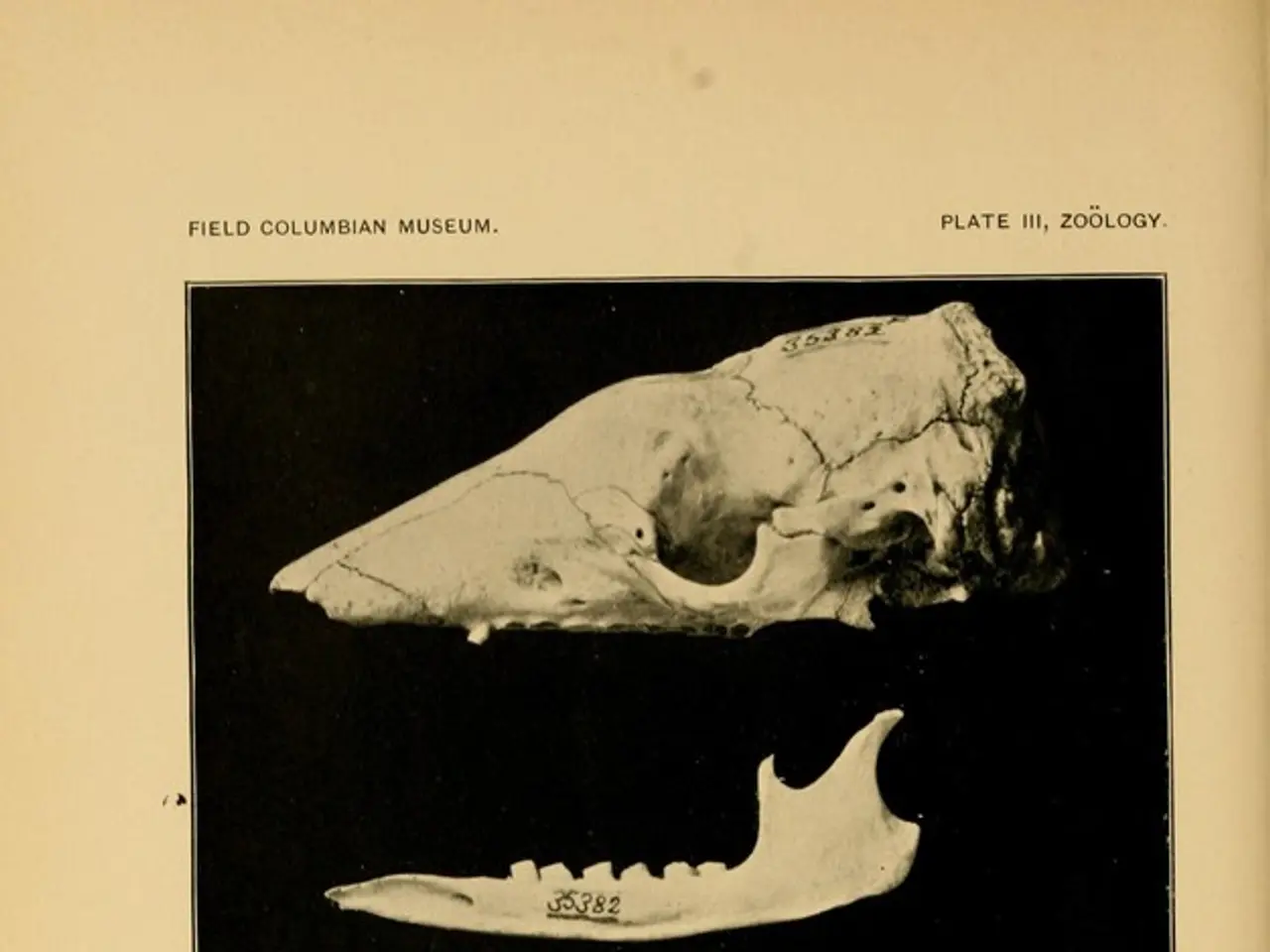8 reasons for clavicle discomfort: Symptoms and remedies for clavicle pain
In the realm of unexplained pain, persistent discomfort in the collarbone area can be a cause for concern. While it's often associated with common injuries or arthritis, there are several less obvious factors that may contribute to this symptom.
One such factor is cervical spine conditions, such as cervical spondylosis, disc disease, protrusion, or herniation. These degenerative changes can cause nerve root compression, leading to pain that radiates to the collarbone area. Symptoms may also include neck stiffness, radiating pain to the arms, tingling, or weakness.
Myofascial pain syndrome is another potential culprit. This condition involves trigger points in muscles around the neck and upper thoracic area, which can cause localized pain that radiates to the shoulders and collarbone region without neurological deficits.
Thoracic outlet syndrome, a condition characterised by compression of nerves or blood vessels near the collarbone, can also cause pain, weakness, and sensory changes in the neck, shoulder, and arm. This compression can be due to an extra cervical rib or muscular compression.
Chronic nerve pain, including conditions like complex regional pain syndrome (CRPS) or peripheral neuropathies, could also be a factor in persistent collarbone pain, especially if related to nerve injury or irritation in the shoulder region.
Soft tissue and fascial issues, such as problems with tendons, ligaments, or fascia around the collarbone, may also contribute to chronic pain in this area. Emerging therapies focusing on fascial health and cellular repair, like red light therapy, may be relevant in treatment.
Treatment options for persistent collarbone pain beyond typical injury care range from pain management techniques like Peripheral Nerve Stimulation (PNS) to physical therapy, myofascial release, and practices that promote circulation and movement freedom. Surgical intervention may be necessary in cases of severe thoracic outlet syndrome or structural abnormalities.
While cancer is not a common cause of collarbone pain, it can occur if cancer has spread from another part of the body, such as lymph nodes. Neuroblastoma, a type of cancer that affects bones and lymph nodes, can cause symptoms like high blood pressure, fevers, sweating, rapid heartbeat, and diarrhea.
If you're experiencing unexplained collarbone pain or pain accompanied by other symptoms, it's essential to contact a doctor for evaluation. A comprehensive evaluation by a specialist is crucial to identify the underlying cause and guide appropriate treatment.
- In some cases, the disease called multiple sclerosis might lead to pain in the collarbone due to its impact on the nervous system.
- Hepatitis, an inflammation of the liver, is not typically linked to collarbone pain, but in rare instances, it could cause discomfort.
- A predictive factor for persistent collarbone pain could be a history of accident and falls, especially if they resulted in fractures or injuries to the bones, such as the clavicle.
- Moreover, type 2 diabetes can lead to arthritis, a common cause of collarbone pain, due to increased inflammation and damage to joints.
- Crohn's disease, a chronic inflammatory bowel condition, might sometimes be associated with joint pain, including the shoulder, which could indirectly affect the collarbone area.
- Psoriatic arthritis, a type of inflammatory arthritis, can cause joint pain and swelling in various parts of the body, including the shoulders, which may radiate to the collarbone.
- Migraines, a neurological disease characterized by severe headaches and pain, can sometimes manifest symptoms in the neck, shoulders, and collarbone region due to tense or contracted muscles.
- COPD, or chronic obstructive pulmonary disease, may not directly cause collarbone pain, but the disease can lead to frequent coughing, which might indirectly impact the collarbone through repeated strain.
- During joint procedures, such as surgery or injections, infection or complications can lead to localized pain and inflammation in the collarbone area.
- In the medical-conditions realm, bone cancer can potentially manifest symptoms in the collarbone; however, this is rare and would typically require cancer spread from another part of the body.
- Depression, often overlooked as a cause of physical pain, can lead to tension and muscle tightness in the neck, shoulders, and collarbone, contributing to persistent discomfort.
- In the health-and-wellness and fitness-and-exercise world, poor ergonomics during exercise, incorrect postures, or repetitive movements can strain muscles around the collarbone, causing chronic pain.
- Lastly, treating existing conditions like collarbone pain, arthritis, diabetes, or depression often requires a holistic approach, combining medication, therapy, lifestyle changes, and even innovative scientific solutions like red light therapy, promoting comprehensive health and wellness.




